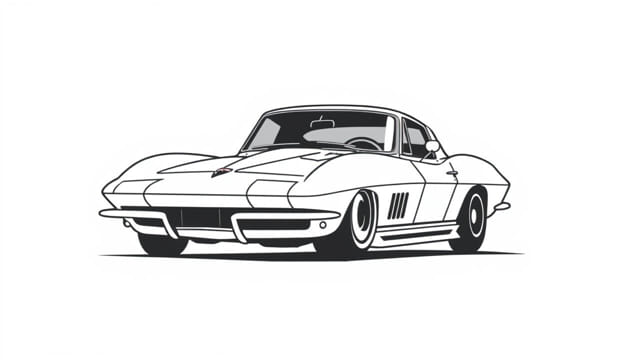Restoring a Chevy Corvette is often a dream project for classic car enthusiasts, blending mechanical skill, passion for automotive history, and an eye for detail. A Corvette restoration attempt is not just about bringing an old car back to life it’s about honoring a legacy, navigating through years of wear and rust, and overcoming the obstacles that come with reviving one of America’s most iconic sports cars. Whether the model is from the 1960s or the early 2000s, each Corvette has its own challenges and rewards during the restoration process.
Understanding the Scope of a Corvette Restoration
A full Chevy Corvette restoration requires careful planning and a realistic understanding of time, cost, and expertise. Restorers often begin by assessing the condition of the vehicle. Is the frame intact? Are the original parts available? What level of restoration is the goal factory-original or modern performance upgrade?
Levels of Restoration
- Concours Restoration: Aimed at making the vehicle as close as possible to how it left the factory, with period-correct parts and finishes.
- Daily Driver Restoration: Focused on usability, comfort, and performance, often blending original and modernized components.
- Restomod: Combines classic styling with updated technology such as fuel injection, disc brakes, and modern electronics.
Initial Steps in a Corvette Restoration Attempt
Inspection and Disassembly
Before any work can begin, a complete inspection is vital. This includes checking for rust on the frame and undercarriage, evaluating the engine’s condition, and identifying missing or non-original components. Most restorations start with a full disassembly of the car, where every piece is removed, labeled, and stored. This phase often reveals hidden issues that were not visible during initial inspection.
Budgeting and Parts Sourcing
One of the biggest challenges is budgeting accurately. A Chevy Corvette restoration can range from a few thousand dollars to over $100,000 depending on the year and desired outcome. Sourcing original parts for older Corvettes especially C1 and C2 models can be particularly challenging. Fortunately, the aftermarket for Corvette parts is strong, with reproduction parts available from specialized vendors.
Engine and Drivetrain Rebuild
Corvettes are known for their performance, and restoring the engine and drivetrain is often the centerpiece of the project. Whether it’s a small-block V8 from the 1960s or a fuel-injected LS-series engine, restoring or replacing internal components is essential. Rebuilding the transmission, differential, and driveshaft ensures that the vehicle runs smoothly and reliably.
Performance Upgrades
Some restorers take the opportunity to upgrade the original engine with modern components such as aluminum heads, electronic ignition, or custom exhaust systems. While these enhancements can improve performance and reliability, they may reduce the car’s authenticity something to consider depending on restoration goals.
Chassis and Suspension Restoration
Many Corvette restoration attempts include repairing or replacing the suspension system. Older Corvettes, especially those built before the 1980s, suffer from worn bushings, rusted control arms, and outdated shock absorbers. A restored suspension not only improves handling but also contributes significantly to ride comfort and safety.
Brake System Overhaul
Upgrading the braking system is another common step. Drum brakes may be converted to discs, and new master cylinders or brake lines may be installed. Safety should never be compromised, even if maintaining historical accuracy.
Bodywork and Paint
Fiberglass Challenges
Unlike many classic cars, Corvettes have fiberglass bodies. This introduces unique challenges, such as stress cracks and delamination. Skilled bodywork is needed to sand, shape, and repair panels without damaging the structural integrity. Once the surface is prepped, primer and paint are applied in multiple layers to ensure a deep, glossy finish.
Color Considerations
Choosing the right paint color is a personal decision. Some restorers opt for original factory colors to preserve historical value, while others choose custom finishes that express individuality. Both approaches are valid depending on the goals of the restoration project.
Interior Restoration
The interior of a Corvette is often where character and comfort come together. Seats may need reupholstering, dashboards may require reconditioning, and gauges often need recalibration or replacement. Whether sticking with original materials or upgrading to modern leather and digital clusters, attention to detail in the interior sets apart a good restoration from a great one.
Electrical System
Older Corvettes often suffer from outdated wiring, brittle connectors, and malfunctioning switches. Rewiring the car, installing a new fuse panel, and ensuring all lights and accessories work correctly is crucial for functionality and safety.
Challenges During a Restoration Attempt
Time and Commitment
Even for experienced enthusiasts, a full Corvette restoration can take months or even years. Many projects stall due to underestimating time commitments or overestimating one’s mechanical abilities. Staying organized, setting realistic goals, and working steadily are essential.
Hidden Damage
Once the car is stripped, many restorers find rusted frames, collision damage, or prior poor repair work that wasn’t visible before. Dealing with these surprises requires flexibility, problem-solving, and often, additional funding.
Success Stories and Lessons Learned
For many, a Chevy Corvette restoration attempt turns into more than just a project it becomes a personal journey. Some restorers recount learning valuable mechanical skills, bonding with family members over weekend work sessions, or discovering hidden stories about the vehicle’s history. Even attempts that don’t reach completion teach patience, discipline, and appreciation for automotive craftsmanship.
Tips for a Successful Corvette Restoration
- Document everything take photos and notes during disassembly.
- Stay organized with labeled storage for small parts.
- Join Corvette forums and restoration communities for advice and support.
- Don’t rush quality takes time.
- Stick to your budget, but be prepared for surprises.
A Chevy Corvette restoration attempt is a challenging yet incredibly rewarding experience. Whether the goal is to return the car to showroom condition or to enjoy it on weekend drives, every bolt turned and panel sanded adds to the car’s story and to the pride of the owner. With patience, planning, and passion, bringing a Corvette back to life is a journey that connects past and present through horsepower, heritage, and craftsmanship.
